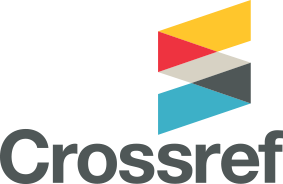الطلب على السياحة ونمذجته
DOI:
https://doi.org/10.26436/hjuoz.2021.9.4.764الكلمات المفتاحية:
الطلب السياحي، المنتج السياحي، أُنموذج الطلب السياحيالملخص
يشير الطلب السياحي إلى رغبة المستهلكين وقدرتهم على شراء كميات مختلفة من منتج سياحي بأسعار مختلفة خلال فترة زمنية معينة. وبإتباع النظرية القياسية قد يتأثر الطلب على السياحة بعدد لا يحصى من العوامل السعرية وغير السعرية. وأن للطلب السياحي أربعة أنواع رئيسية من المرونات وهي: مرونة الطلب السعرية (درجة الإستجابة للتغيرات في سعر ذلك المنتج نفسه) ومرونة الدخل (درجة الإستجابة للتغيرات في مستوى دخل المستهلك) والمرونة السعرية المتقاطعة (درجة الإستجابة للتغيرات في أسعار السلع البديلة والمكملة) ومرونة التسويق/ الإعلان (درجة الإستجابة للتغيرات في نفقات الإعلان على هذا المنتج). لذلك تعد معرفة مرونة الأسعار مهمة للقائمين على السياحة الذين يسعون إلى زيادة عائدات المبيعات. وتحتوي الأدبيات على عدد كبير من الدراسات البحثية التي حاولت نمذجة العوامل التي تؤثر على الطلب السياحي ومديات هذا التأثير. في حالة تقدير نماذج الطلب يجب الإنتباه بعناية في مواصفات النموذج وجمع البيانات و الصيغة الدالية وتقييم النتائج.
التنزيلات
المراجع
1. طارق العكيلي، الإقتصاد الجزئي، الجامعة المستنصرية، 2000.
2. فتحي ذياب أحمد عواد، مقدمة في الإقتصاد الجزئي المعاصر، الرضوان للنشر والتوزيع، ط1، 2014، عمان الأردن.
3. كامل علاوي الفتلاوي وحسن لطيف الزبيدي، الإقتصاد الجزئي النظريات والسياسات، المكتبة العالمية للكتاب الجامعي، بيروت-لبنان، بدون تاريخ.
4. كريج ديبكن، ترجمة خالد العامري، الإقتصاد الجزئي بوضوح، دار الفاروق للإستثمارات الثقافية، ط1، 2008، القاهرة.
5. مثنى طه الحوري، اسماعيل محمد علي الدباغ، اقتصاديات السفر والسياحة، الوراق للنشر، ط1، عمان-الاردن.
6. محمد طاقة ومحمد الزيود ووليد أحمد الصافي و حسين عجلان، أساسيات علم الإقتصاد (الجزئي والكلي)، إثراء للنشر والتوزيع اللأردن ومكتبة الجامعة الشارقة، ط2، 2009.
7. معتز نعيم وعابد فضيلة وزياد زنبوعة، الإقتصاد الجزئي، جامعة دمشق، 2017-2018، ص 116 و 146-147.
8. مناور فريح حداد و حازم بدر الخطيب، مبادىء الإقتصاد الجزئي، دار الحامد للنشر والتوزيع، 2015.
ثانياً: المصادر باللغة الإنكليزية
أ: الكتب
1. Larry Dwyer, Peter Forsyth, Wayne Dwyer, Tourism Economics and Policy, 2020, Channel View Publications.
2. Song, H. and L. Turner 2006, “tourism Demand Forecasting” in L. Dwyer and P. Forsyth (eds) International Handbook on the Economics of Tourism, Cheltenham: Edward Elgar.
3. Song, H. and S.F. Witt 2000, “Tourism Demand Modelling and Forecasting: Modern Econometrics Approaches, Cambridge: pergamon.
4. A. Koutsoyannis, Modern Microeconomics, 1979, Palgrave London, UK.
5. B. Douglas Bernheim, Michael D. Whinston, Microeconomics, McGraw-Hill, 2008, N.Y., USA.
6. Bradley R. Schiller, the Microeconomy Today, McGraw-Hill, 2006, N.Y., USA.
7. Campbell R. McConnell, Stanley L. Brue, Sean M. Flynn, Economics:
8. John Tribe, The Economics of Recreation, Leisure and Tourism, 5th ed, 2016, Routledge, N.Y. USA.
9. Damodar N. gujarati, and Dawn C. Porter, 2009, “Basic Econometrics” 5th ed., Mc Graw Hill, N.Y., USA
10. Salvatore, D. (1989) Managerial Economics, Case Study 6.2, New York: McGraw-Hill.
11. Lim, C. 2006, “Tourism Demand Modelling: Issues and Implications” in L. Dwyer and P. Forsyth (eds) International Handbook of Tourism Economics, London: Edward Elgar.
principles, problems, and policies, 19th ed, McGraw-Hill/Irwin, 2012, N.Y., USA.
ب) الدوريات والمجلات
1. Acutt, M.Z. and J.S. Dodgson (1996) “Cross-elasticities of Demand for Travel”, Transport Policy, 2(4).
2. Rosensweig, J.A. 1986, “Exchange Rates and Competition for Tourists”, New England Economic Review, July/August.
3. Lim, C. 1999, “A Meta-Analysis Review of International Tourism Demand”, Journal of Travel Research, 37.
4. Kulendran, N. and L. Dwyer, 2009, “Measuring the Return from Australian Tourism Marketing Expenditure in Asia”, journal of Travel Research, 47, February.
5. Jackson, R.T. 1990, “VFR TOURISM: Is it Underestimated”, The Journal of Tourism Studies, 1(2), November.
6. - Seetaram, N. and L. Dwyer 2009, “Immigration and Tourism Demand in Australia: A Panel Data Analysis”, ANATOLIA, 20(1).
7. Li, G., H. Songand S.F. Witt 2005, “Recent Developments in Econometric Modelling and Forecasting”, Journal of Travel Research, 44.
8. Bigano, A., J.M. Hamilton and R.S.J. Tol 2005, “the Impact of Climate Change on Domestic and International Tourism: A Simulation Study”, Working paper FNU-58.
9. Divisekera, S. 2003, “A Model of International Tourism Demand”, Annals of Tourism Research, 30(1).
10.Crouch, G.I. 1992, “Effects of Income and Price on International Tourist Demand”, Annals of Tourism, 19(4).
11. Smith, A.B. and J.N. Toms, 1978, “Factors Affecting Demand for International Travel to and from Australia”, Occasional Paper 11, Canberra: bureau of Transport Economics.
12. Butler R, 1980, The Concept of a Tourism Area Cycle of Evolution: Implications of Management Resources, The Canadian Geographer.
13. Hollander, G. 1982a, “Determinants of Demand for Travel to and from Australia”, Working Paper No. 26, Canberra: Bureau of Industry.
14. Naude, W. A., A. Saayman, 2005, “Determinants of Tourist arrivals in Africa: A Panel Data Regression Analysis”, Tourism Economics, 11.
15. Saayman, A. and M. Saayman, 2008, “The Determinants of Inbound Tourism to South Africa”, Tourism Economics.
16. Van Der Merve, P., M. Saayman and w. f. Krugell, 2007, “The Determinants of the Spending of Biltong Hunters”, South African Journal of Economics and Management Sciences.
17. Song, H. and G. Li. 2008, “Tourism Demand Modelling and Forecasting – A Review of Resent Research”, Tourism Management.
18. Crouch, G.I. 1994a, “The Study of International Tourism Demand: A Review of Findings”, Journal of Travel Research.
19. Witt, S.F., and C.A. Witt, 1995, “Forecasting Tourism Demand: A Review of Empirical Research”, International Journal of Forecasting, 11(3).
20. Alperovich, G. and Y. Machnes 1994, “The Role of Wealth in the Demand of International Air Travel Tourism and Poverty Relief”, Journal of Transport Economics and Policy.
التنزيلات
منشور
كيفية الاقتباس
إصدار
القسم
الرخصة
يوافق المؤلفين الذين ينشرون في هذه المجلة على المصطلحات التالية
[CC BY-NC-SA 4.0] يحتفظ المؤلفون بحقوق الطبع والنشر ومنح حق المجلة في النشر الأول مع العمل المرخص له بموجب ترخيص مشاع المبدع للإسناد
الذي يسمح للآخرين بمشاركة العمل مع الإقرار بحقوق التأليف والنشر الأولي في هذا مجلة
مكن للمؤلفين الدخول في ترتيبات إضافية منفصلة للتوزيع غير الحصري للنسخة المنشورة من المجلة، مع الإقرار بإصدارها الأولي في هذه المجلة
يسمح ويشجع المؤلفين على نشر عملهم عبر الإنترنت

















